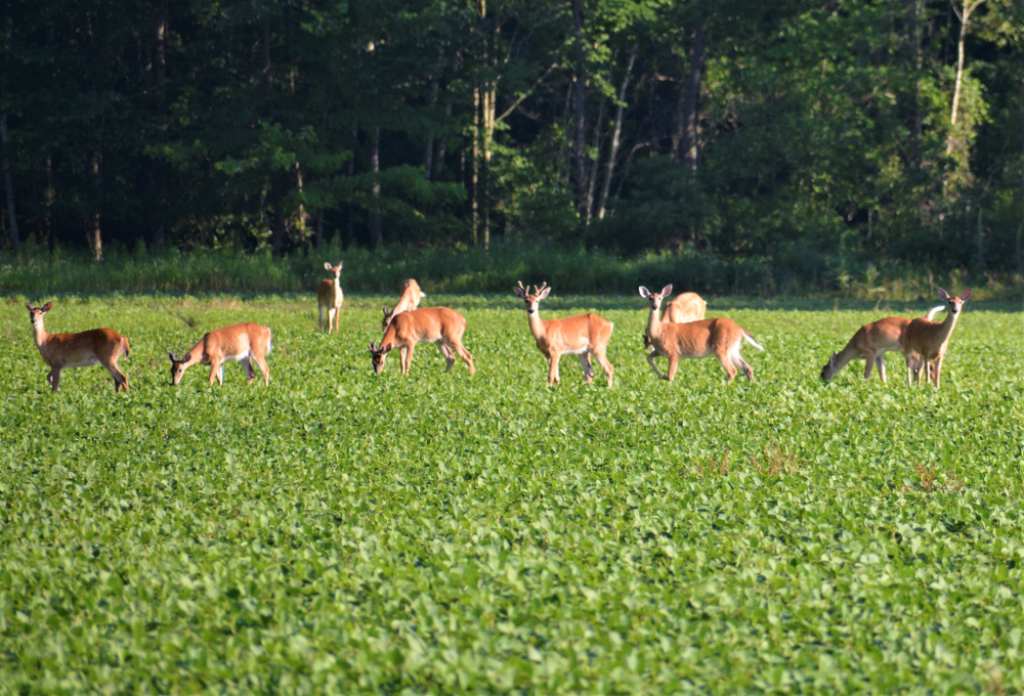If you’ve read our blog post on what deer like to eat, you already know a decent amount about their overall diet.
What you may or may not know is that deer eat a seasonally-varied diet in the wild. Or, as Mississippi State University’s Deer Ecology & Management Lab puts it, “Diet selection changes in response to seasonal changes in forage abundance, quality, and metabolic needs of the animal."
So, what exactly do deer eat in the wintertime? And when it comes to feeding deer in winter months, what is the best feeding strategy and type of food to use to attract them while meeting their seasonally-specific nutritional needs? Let’s dive a little deeper so you can keep deer coming back during the coldest months of the calendar year.
What is Safe to Feed Deer in Winter?
Pre-packaged deer feed often includes a balanced mix of nutritionally-sourced ingredients such as soy, oats, and corn. But because deer are ruminants, they rely on micro-organisms rather than digestive juices to break down food.
In practice, what this means is that these microorganisms can take weeks to adjust to any changes in their diet. Therefore, deer can easily eat something, yet receive no nutritional value from it for weeks. This can and often does cause starvation and malnutrition.
Because of this, many experts recommend against supplemental feeding.
That said, supplemental feeding can be done safely if you know what types of foods to look for. Here are some food sources that can be used to feed deer in the winter:
- Corn: Whole corn or corn mixed with other grains can be a good source of calories and fat for deer.
- Apples and other fruits: Apples, pears, and other fruit can provide a good source of vitamins and minerals for deer.
- Vegetables: Carrots, sweet potatoes, and other root vegetables can be a good source of nutrition for deer.
- Protein pellets: These pellets contain a high concentration of protein and can be a great supplement to their diet.
A note of caution: corn alone should not be used to feed deer in the winter as it does not contain enough protein to meet the nutritional needs of deer.
What Specific Browse Do Deer Eat in the Winter?
Here is a list of foods that Deer eat in the winter according to New York State’s Department of Environmental Conservation
- Preferred (Best Liked): Cedar (white or arborvitae), sassafras, wintergreen, alternate-leaved dogwood, yew, mountain maple, witch hobble, basswood, apple, maples*, flowering dogwood, and staghorn sumac.
- Second Choice: Elderberry, highbush cranberry, silky dogwood, nannyberry, wild raisin, red-berried elder, highbush blueberry, red osier dogwood, cucumber tree, arbutus, mountain ash, willow*, honeysuckle, and hemlock.
- Readily Eaten: White ash, black birch, American chestnut, spicebush, black walnut, butternut, wild grape, sugar maple, yellow birch, black cherry, choke cherry, shadbush (winterberry), black ash, bush honeysuckle, oaks*, hickory, witch hazel, elm, lowbush blueberry, hazelnut, and leatherwood.
- Starvation or Poor Food: Scotch pine**, red pine**, mountain laurel**, paper birch, spruces, grey-stemmed dogwood, raspberry, blackberry, sheep laurel, buckthorn, pitch pine**, beech, rhododendron**, musclewood (blue beech), alder, red cedar, sweet fern, tamarack, hawthorn, white pine**, aspen (poplar), gray birch, ironwood (hop hornbeam), black locust, balsam**, gooseberry*, currant* and pin cherry.
How Summer & Winter Feeding Differ
As the Maine Dept. of Inland Fisheries and Wildlife notes in its article “Winter Feeding of Deer”, The change in microorganisms in winter compared to spring, summer, means deer’s digestive systems are optimized to turn fibrous woody browse during winter months into proteins “through intricate physiological processes”.
Discover Tectonic’s Daytime Deadfall Feeder
Tectonic’s Daytime Deadfall Feeder helps you feed deer any food, during any season. Check it out now to help train your herd to feed during daytime hours when hunting is allowed.
Disclaimers:
*There is considerable difference in palatability and preference of the different species of this genus.
**This species is often browsed heavily enough to appear to be second choice food in areas where winter food is inadequate.

